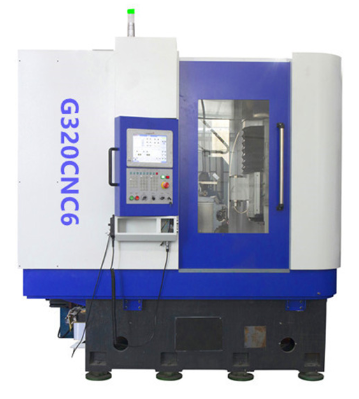The Difference Between Gear Shaping and Gear Hobbing
- 31 Mar, 2023
- 3731 views
It is one thing to look at what gears do and how they work, but it is another thing to look deeper at how exactly gears are made and constructed. Today, that is exactly what we are going to do. Gear shaping and gear hobbing are both common ways to create gears.
Just like any sheet metal is fabricated to form the right mold, shape, size, and so on, gear manufacturing has certain machining processes such as shaping, hobbing, and so on. Gears are required to be set in motion, rotate, and raise the speed of any machine, industrial equipment, automobiles, and so on. So, how are these gears made? CNC machining methods are widely applied in the last stages of gear manufacturing, and milling, casting, forging, and so on are some of the methods used. Gear shaping and hobbing are also two important processes of gear manufacturing. The process to be used depends on gear specifications such as the shape and size required, among other parameters. This post discusses and compares the two methods- gear shaping and gear hobbing.

CNC Gear Hobbing Machine
What is Gear Shaping?
This is a convenient and versatile method of gear cutting. Truthfully, this is one of the most popular production choices in gear manufacturing. This process is done by using a specific machine to create the teeth of the gear. Shaping is almost a subset of the milling process. This process helps form the gear teeth with the help of a rotating cutter tool, wherein its axis is parallel to that of the gear. The rotating speed and velocity of the cutter must match with the gear blank for teeth formation. A train of gears helps achieve the relative motion between the cutter shaft and the gear blank. Here the cutting may happen either at a downward or upward stroke. This is suitable for shaping of gears closely located toward the flanges or other obtrusive surfaces. This is widely used process for making internal and external gears. High dimensional accuracy is one of the major benefits of the shaping process apart from its cost-effective tools. After this process, surface finishing may be required depending upon the application.
What is Gear Hobbing?
Cutting splines, sprockets, and gear cutting, in general, is done using this process. Gear hobbing uses a special type of milling machine that allows for the teeth or splines to be progressively cut into the material by a series of cuts made by the tool this tool is called the hob.
Hobbing is a method also used for teeth formation in gear manufacturing. This teeth formation is done on the gear blank with the help of a hob on CNC gear hobbing machines. This machine is a type of special milling equipment. It could be an index hob or a master hob. There are various other types of hobs such as spline, spur, helical, chamfer, roller chain sprocket, straight side, and so on. The gear blank and the hob rotate simultaneously and produce continuous cuts on the blank gear which gives the required depth to the teeth. As mentioned above, the machining processes chosen are largely based on the shape and size of the gear. Likewise, hobbing is applicable for gear shapes such as helical, straight bevel, crowned, worm, face, and chamfering. Also, it is suitable for medium to high production volume. This cost-effective yet efficient process is useful to make several parts irrespective of the quantity.
Accuracy
There are benefits that come with each gear production. For example, the movement accuracy of gear hobbing is high. While that is not the case for gear shaping, gear shaping is more accurate in the surface finish. This is because the mechanic gear shaper is more complex. When comparing the two even further, the manufacturing process is simpler and easier to manufacture more accurately.
Productivity
In most scenarios, gear hobbing is more productive than gear shaping. This is because, in gear hobbing, there is not a large number of redundant metals. There is an instance, however, where gear shaping can compete with gear hobbing in terms of productivity. That scenario occurs when the gear is smaller in size and the teeth have a large and small-tooth width.
Looking at the accuracy and productivity allows you to better see the difference between gear shaping and gear hobbing. These two gear producing systems are alike, yet have their differences. Hopefully, this explanation gives you a better foundation to understand that.
If you are interested in CNC Gear Hobbing Machine or need a quote for a large project, be sure to contact us today!
- Category:
- Business
- No comments


